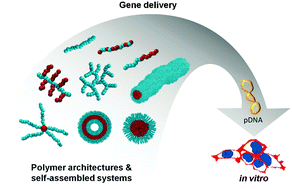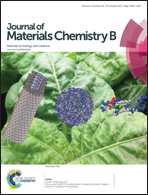The influence of polymer architecture on in vitro pDNA transfection
Abstract
In 2012, the first gene therapy agent was approved by the Europe Medicines Agency leading to increased interest in this research field. Beside viruses, non-viral agents based on lipids or polymers represent aspiring alternatives to deliver the genetic material. Different hurdles have to be overcome depending on the kind of nucleic acid used, where plasmid DNA (pDNA) and small interfering RNA represent the common ones. The main challenge for transfection agents, in particular for pDNA delivery, is the transfer to the cell and into the cell nuclei. Within the group of transfection vesicles, cationic polymers show promising features and variability, as they can be synthesized with tailor-made physical and chemical properties (architectures and functionalisation). In the field of polymer-based gene delivery, the tuning potential of polymers by using different architectures like graft and star-shaped polymers as well as self-assembled block copolymers is immense. In particular, in the last few years numerous new polymer designs showed enhanced transfection properties in combination with good biocompatibility. Furthermore, new insights into the transfection mechanism demonstrated the continuous progress in this field. Polymer architecture influences the polyplex characteristics and the latter has an impact on the transfection mechanism, e.g. the interaction with the cellular membrane depends on the polyplex shape. Moreover, polyplex dissociation can be easily influenced by the polymer chemistry, thus biodegradable linkers lead to well suited polymers with reduced toxicity and high delivery potential, and are also promising for in vivo applications. This review focuses on the influence of polymer architectures for pDNA transfection in vitro, showing recent developments and insights. The theoretical background concerning the biological challenges for cationic polymers and the impact of graft- or star-shaped architectures as well as self-assembled structures will be presented in detail.

- This article is part of the themed collection: 2015 Journal of Materials Chemistry B Hot Papers

 Please wait while we load your content...
Please wait while we load your content...